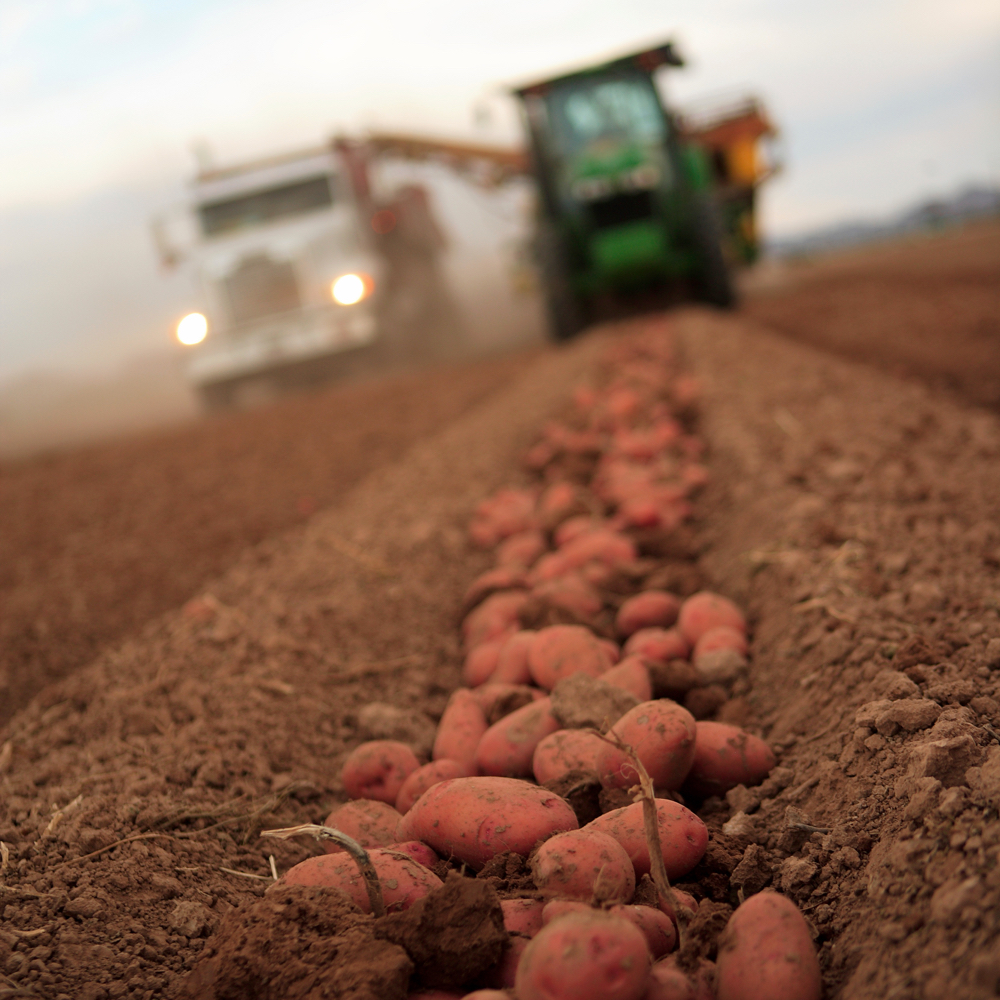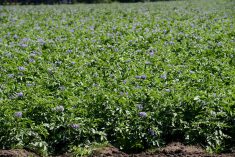Late July brings a variety of conditions to potato fields across the province, and one common theme unites them all: late blight.
The fungal disease has become serious in the past five or six years, garnering more attention through monitoring, the placement of spore traps and through regular updates courtesy of the Ontario Potato Board’s Eugenia Banks.
Why it matters: Late blight can cause significant yield and quality loss in potatoes.
Read Also

The forced Japanese-Canadian farmers of the Second World War
Manitoba’s sugar beet farms drew on displaced Japanese-Canadians from B.C. during the Second World War
As Banks reported late last month, cooler temperatures combined with rain provide suitable conditions for blight, and the Ontario Potato Board supported placement of four spore traps to minimize damage.
Two are near Melancthon and two near Alliston.
“These spore traps will provide information on the detection of spores but they will not replace field scouting or a proactive fungicide program,” says Banks.
Scouting is the first line of defense against late blight, as outlined in a document Banks shared in mid-June that gives early, mid- and late-summer directions on what and where to look for trouble spots.
In mid-summer, she advises growers to scout their fields twice a week. Rows are closed and the lower parts of the plants can remain wet for longer periods after a rain, allowing late blight sporangia to germinate and initiate infections.
Another recommendation is to check for alternative weed hosts, particularly hairy nightshade, along potato field edges. As a weed species, it’s becoming more common in Ontario and growers should destroy it wherever they find it.
Other items on the mid-summer checklist include managing irrigation. Banks advises against overlaps and irrigating when there’s dew on the crop. Instead, irrigate when leaves will dry in less than eight hours.
She also advises use of a spray program with alternating fungicides from different chemical groups and hosing down equipment after leaving an infested field.
“And if late blight is found in a localized spot in a field, top-kill the spot plus a six-foot border of surrounding plants,” says Banks.
“Surrounding plants may have no symptoms but may be infected. It takes at least three to four days for symptoms to become visible after infection.”

Later in the summer
As August progresses toward September, Banks urges growers to continue scouting, especially after cool, rainy weather. Late-season infections can result in tuber rot, which is also why she advocates top-killing infected fields if heavy rain is forecast.
Rain can wash sporangia into soil cracks and into the tuber zone. Sealing soil cracks with a roller is another way to reduce tuber infection before harvest.
Growers can also perform test digs to check for tuber infection, map infected areas and avoid harvest of those parts of a field.
Finally, she recommends top-killing vines at least two weeks before harvest. They should be completely dead before digging to reduce the risk of tuber infection. Infected green vines may release late blight sporangia that can infect tubers at harvest.
A tank mix of Reglone and a copper-based fungicide will kill sporangia on infected tissues that aren’t killed by a desiccant. Phosphorus acid can also be used as a post-harvest treatment of tubers to reduce the spread of late blight in storage.
Other news from the field
Banks found few signs of potato virus Y (PVY) in fields she scouted late in June. By her estimate, it was only one to two per cent. The same was true with Colorado potato beetle counts in a headland of one field.
“It was nothing serious but certainly something to keep an eye on,” she says. “It does look like the first generation of CPB was controlled effectively by seed treatment with neonics.”
She notes a few plants in the province have been infected with old blackleg, a rare genetic disorder, which she says is nothing to worry about. There have also been incidents of Prism SG herbicide discolouring younger leaves and pinching the terminal leaf.
“These symptoms may be confused with a viral disease but they’re temporary,” says Banks.















